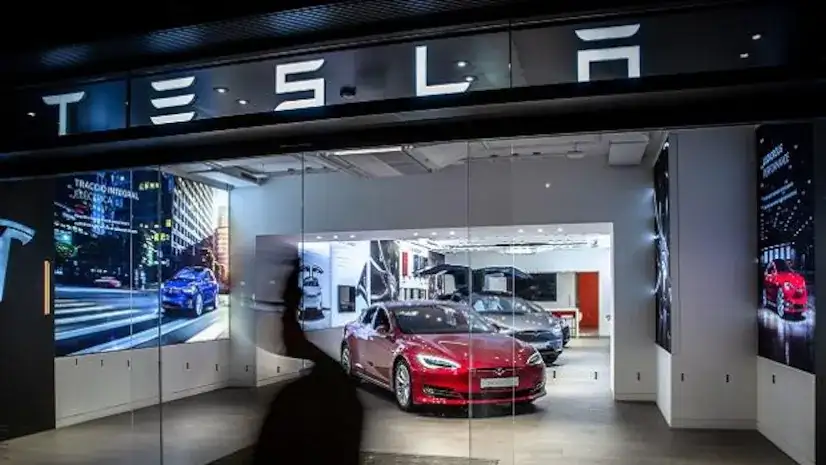In a significant shift in its trade policy, the European Union has decided to reduce the tariffs it had planned to levy on electric vehicles (EVs) manufactured by Tesla and other Chinese manufacturers. Concerns about unfair competition and the potential threat to European automakers prompted the EU to initially propose higher tariffs on these imports. The objective was to shield the automotive industry in the EU from what was perceived to be a flood of vehicles from China with competitive prices that could hurt local manufacturers and affect jobs in the region.
However, the EU decided to reduce these tariffs after conducting extensive negotiations and taking into account the broader implications for international trade relations. The strategic effort to create a more balanced trading environment and to maintain positive economic ties with China, a major global trading partner, is reflected in this decision. The revised tariff structure aims to find a middle ground between supporting European industry and accepting the advantages of foreign EV manufacturers' competitive pricing and technological advancements.

As a result of the lower tariffs, Tesla may be able to import its vehicles into the European market at lower prices, potentially increasing its market share and making its products more affordable. In a similar vein, other Chinese manufacturers of electric vehicles will find it simpler to establish themselves in Europe, which will not only intensify the competition but also have the potential to propel innovation and enhance the options available to consumers.
There have been a variety of responses to the EU's decision. Leaders in the European automobile industry are concerned that lowering tariffs could hurt the competitiveness of local manufacturers, who might find it difficult to compete with cheaper imports. On the other hand, those in favor of the choice say that it will make the market more dynamic, encourage technological advancements, and give European customers more options.

This policy change demonstrates how difficult it is for the EU to manage trade relations in a globalized economy. Decisions must carefully balance the interests of domestic industries with the advantages of open trade and international cooperation. The move demonstrates that the EU is aware of the changing dynamics in the automotive industry, where cooperation and competition increasingly coexist.
The European Union recently adjusted its import tariffs on electric vehicles (EVs) from China, impacting several automakers, including Tesla. This shift follows an investigation into alleged Chinese government subsidies for domestic EV production, which some believe allow Chinese companies to sell vehicles at artificially low prices in European markets.
Tesla's tariff rate was initially set at 20.8%, but after the company appealed, it was reduced to 9%. This reduction came after a review of Tesla's state aid, which found that the company received fewer subsidies compared to other manufacturers building cars in China. However, the EU maintained the tariff to some extent, citing concerns over benefits such as below-market-value batteries supplied to Tesla, which could create an unfair competitive advantage.
Other automakers also saw tariff adjustments. BMW's electric Mini, which had faced a tariff of 37.6%, will now be subject to 21.3%, reflecting a more favorable stance. Similarly, the tariffs on vehicles from companies like BYD, Geely, and SAIC were reduced slightly. While this move benefits European consumers by keeping car prices lower, it also underscores Europe's efforts to protect its automotive industry from what it perceives as unfair Chinese competition.
The changes are significant not only for Tesla but also for the broader EV market, with European leaders aiming to balance competition and the protection of local industries. While China argues that its EV manufacturers don't harm the European market, these tariffs reflect broader geopolitical tensions and trade dynamics in the automotive sector.
The recent reduction in tariffs on Chinese-made electric vehicles (EVs) by the European Union marks a significant development in the ongoing trade tensions between China and Europe. The European Commission (EC) had initially proposed tariffs of up to 20.8% on Chinese-made EVs to address concerns about subsidies from the Chinese government, which critics argued allowed Chinese manufacturers to sell vehicles at artificially low prices, potentially harming European manufacturers and distorting the market.
Tesla’s Favorable Outcome
One of the most notable outcomes of the tariff adjustment is the treatment of Tesla. Originally placed in the group of companies receiving the 20.8% tariff, Tesla successfully argued for a reduction. As a result, the tariff on Tesla vehicles made in China is now set at 9%, significantly lower than the initial rate. This reduction is considered a win for the company, which had previously warned that higher tariffs could force it to increase prices in Europe, potentially affecting its competitiveness.
Tesla's relatively low tariff rate also reflects its different position compared to other Chinese manufacturers. Tesla, which has built a strong brand in Europe, benefits from its innovation and market presence. Although it has received some subsidies in China, Tesla’s subsidy structure is less extensive than that of some other Chinese automakers.
. Tesla’s favorable tariff treatment could signal the EU’s desire to differentiate between companies based on their local contributions and operational models rather than broadly penalizing all Chinese-made EVs.
Impact on Other Manufacturers
While Tesla saw a reduction, Chinese automakers like BYD, Geely, and SAIC were subject to higher tariffs. These companies, which have aggressive expansion strategies in the European market, will now face tariffs ranging from 17% to 36%, depending on their participation in the EU's investigation. The tariff rates imposed on these companies aim to level the playing field, ensuring that their low pricing—potentially supported by substantial subsidies from the Chinese government—does not undermine the competitive position of European automakers.


)





